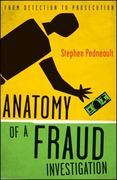Question
Harold owns a cranberry bog in which he grows cranberries. Harold's farm is a competitive, profit-maximizing firm. As such, Harold much decide (i) how many
Harold owns a cranberry bog in which he grows cranberries. Harold's farm is a competitive, profit-maximizing firm. As such, Harold much decide
| (i) | how many cranberries to sell. | |||
| (ii) | what price to charge for his cranberries. | |||
| (iii) | what wages to pay his workers. | |||
| (iv) | how many workers to hire. | |||
| a. | (i) only | |||
| b. | (ii) and (iii) only | |||
| c. | (i) and (iv) only | |||
| d. | (i), (ii), (iii), and (iv) | |||
23.Which of the following would increase the demand for labor?
| (i) | a decrease in the output price | |||
| (ii) | an increase in the output price | |||
| (iii) | a labor-saving technological advance | |||
| (iv) | a labor-augmenting technological advance | |||
| a. | (i) only | |||
| b. | (i) and (iii) only | |||
| c. | (ii) only | |||
| d. | (ii) and (iv) only | |||
24.Which of the following illustrates the concept of a negative externality?
| a. | A college professor plays a vigorous game of racquet ball with the racquet he recently purchased. |
| b. | A flood wipes out a farmer's corn crop. |
| c. | A college student plays loud music on his new stereo system at 2:00 a.m. |
| d. | A janitor eats a hamburger during his lunch break. |
25.Negative externalities lead markets to produce
| a. | greater than efficient output levels and positive externalities lead markets to produce smaller than efficient output levels. |
| b. | smaller than efficient output levels and positive externalities lead markets to produce greater than efficient output levels. |
| c. | greater than efficient output levels and positive externalities lead markets to produce efficient output levels. |
| d. | efficient output levels and positive externalities lead markets to produce greater than efficient output levels. |
26.Suppose that electricity producers create a negative externality equal to $5 per unit. What is the relationship between the equilibrium quantity and the socially optimal quantity of electricity to be produced?
| a. | They are equal. |
| b. | The equilibrium quantity is greater than the socially optimal quantity. |
| c. | The equilibrium quantity is less than the socially optimal quantity. |
| d. | There is not enough information to answer the question. |
27.Which of the following is an example of a positive externality?
| a. | air pollution |
| b. | a person littering in a public park |
| c. | a nice garden in front of your neighbor's house |
| d. | the pollution of a stream |
28.If a market is characterized by a positive externality that is not the result of a technology spillover,
| a. | the socially optimal level of output is less than the equilibrium level of output, and the optimal price is greater than the equilibrium price. |
| b. | the socially optimal level of output is greater than the equilibrium level of output, and the socially optimal price is less than the equilibrium price. |
| c. | the socially optimal level of output is greater than the equilibrium level of output, and the socially optimal price is greater than the equilibrium price. |
| d. | the socially optimal level of output is less than the equilibrium level of output, and the socially optimal price is less than the equilibrium price. |
29. If the government wanted to ensure that the market reaches the socially optimal equilibrium in the presence of a technology spillover, it should
| a. | impose a corrective tax on any firm producing a technology spillover. |
| b. | offer tax credits to consumers who are adversely affected by the new technology. |
| c. | subsidize producers by an amount equal to the value of the technology spillover. |
| d. | provide research grants to those firms not currently engaging in research to increase competition in the industry. |
30.If it is illegal for a biochemical manufacturer to release its waste into a nearby stream, then this is an example of
| a. | a market-based policy. |
| b. | a command-and-control policy. |
| c. | tradable pollution permits. |
| d. | transaction costs. |
Step by Step Solution
There are 3 Steps involved in it
Step: 1

Get Instant Access to Expert-Tailored Solutions
See step-by-step solutions with expert insights and AI powered tools for academic success
Step: 2

Step: 3

Ace Your Homework with AI
Get the answers you need in no time with our AI-driven, step-by-step assistance
Get Started


